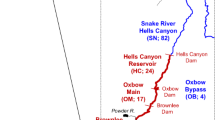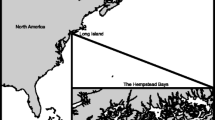Abstract
A warming earth has lost substantial mountain-stored frozen fresh water, thus generating a pressing need for greater liquid–water storage within upper-elevation riparian systems. Liquid–water storage can be enhanced by avoiding microtopographic channels that facilitate land drainage and rapid runoff. A number of authors have attributed certain forms of wetland hummocks and inter-hummock channels to grazing livestock but there is little evidence in the scientific literature for a cause and effect mechanism. We used comparisons at six fencelines on four meadow and wetland complexes to test the null hypothesis that grazing management makes no difference in hummocks and inter-hummock channels measured as surface roughness. Surface roughness was measured both photogrammetrically (photo) and with an erosion bridge (EB), and the measurements expressed as surface roughness indices (SRIs). Wetland surface roughness inside fenced areas was 44 (EB) and 41 (photo). Wetland surface roughness outside fenced areas was more than 50 % higher (p < 0.0001), measuring 76 (EB, n = 6) and 62 (photo, n = 4). The site with the longest period of conservation management (50+ years) had the lowest inside EB SRI at 27. The two independent measurement methods, EB and photo, yielded similar, correlated results (R = 0.71, n = 8). Historical aerial photography provides supporting evidence for our findings. We reject the null hypothesis and while we suspect macrotopography, hydrology, soil type, and climate are factors in hummock formation, our evidence supports the thesis that hummocks formed surface-down by inter-hummock channels result primarily from grazing by domestic livestock.








Similar content being viewed by others
References
Booth DT, Cox SE, Berryman RD (2006) Precision measurements from very large scale aerial digital imagery using image measurement, Laserlog, and Merge software applications. Remote Sens Environ 112:293–307
Chandler J, Ashmore P, Paola C, Gooch M, Varkaris F (2002) Monitoring river-channel change using terrestrial oblique digital imagery and automated digital photogrammetry. Ann Assoc Am Geogr 92:631–644
Chimner RA, Cooper DJ (2003) Carbon dynamics of pristine and hydrologically modified fens in the southern Rocky Mountains. Can J Bot 81:477–491
Coffman K (2013) Property losses from Colorado flood projected at about $2 billion. Reuters US Edition. http://www.reuters.com/article/2013/09/19/us-usa-colorado-flooding-idUSBRE98H1BA20130919, Accessed 23 Dec 2013
Corning RV (2002) Diminished sweetwater river flows from the high cold desert region of Wyoming. A whitepaper included in Part III of the 2002 Green Mountain Common Allotment Evaluation, Lander Field Office, Bureau of Land Management
Downard R, Endter-Wada J (2013) Keeping wetlands wet in the western United States: adaptations to drought in agriculture-dominated human-natural systems. J Environ Manag 131:394–406. doi:10.1016/j.jenvman.2013.10.008
Gilley JE, Kottwitz ER (1995) Random roughness assessment by the pin and chain method. Biological Systems Engineering. DigitalCommons@University of Nebraska—Lincoln. http://digitalcommons.unl.edu/biosysengfacpub/60
Girard M, Wheeler DL, Mills SB (1997) Classification of riparian communities on the Bighorn National Forest. USDA Forest Service Rocky Mountain Region R2-RR-97-0
Google Earth v7.1.1.1580 (2013) PB Creek Exclosure, Wyoming. 42.338°,-108.422°. http://www.earth.google.com, accessed 21 Jan 2014
Hairsine PB, Moran CJ, Rose CW (1992) Recent developments regarding the influence of soil surface characteristics on overland flow and erosion. Aust J Soil Res 30:249–264
Heede BH (1978) Designing gully control systems for eroding watersheds. Environ Manag 2:509–522
Jankovsky-Jones M (1999) Conservation strategy for wetlands in east-central Idaho. Idaho Department of Fish and Game, 600 South Walnut, P.O. Box 25, Boise, ID 83707
Jester W, Klik A (2005) Soil surface roughness measurements—methods, applicability, and surface representation. Catena 64:174–192
Johnson B, Carey T (2004) Cows and ditches make fen delineation a unique challenge or lessons learned in delineating an impacted, subalpine fen. Aquat Resour News 3(4):9–12
Luk SH (1983) Effect of aggregate size and microtopgraphy on rainwash and rainsplash erosion. Zeitschrift für Geomorphologie (Ann Geomorphol) 27:283–295
Magnusson B, Elmarsdottir A, Barkarson BH (1998) Horse ranges—a method to assess range condition. Agricultural Research Institute, Keldnaholt, 112 Reykjavik, Iceland. http://www.rala.is/umhvd/hhagar/edefault.htm. Accessed 20 Dec 2013
Mathews NA (2008) Aerial and close-range photogrammetric technology: Providing resource documentation, interpretation, and preservation. Tech Note 428. Bureau of Land Management, National Operations Center, Denver, CO
Maurin A, Berggren M (2011) Soil surface roughness (pin) meter. USDA Engineering & Wind Erosion Research Unit, Center for Grain and Animal Health Research, Manhattan, KS
McEldowney RR, Flenniken M, Frasier GW, Trlica MJ, Leininger WC (2002) Sediment movement and filtration in a riparian meadow following cattle use. J Range Manag 55:367–373
Miller RL, Fujii R (2010) Plant community, primary productivity, and environmental conditions following wetland re-establishment in the Sacramento-San Joaquim Delta, California. Wetl Ecol Manag 18:1–16
Naiman RJ, Decamps H (1997) The ecology of interfaces: riparian zones. Annu Rev Ecol Syst 28:621–658
National Aeronautics and Space Administration (2013) GISS surface temperature analysis. http://data.giss.nasa.gov/gistemp/, Accessed 23 Dec 2013
National Oceanographic and Atmospheric Administration (2011A) The Missouri/Souris River floods of May-August 2011. http://www.nws.noaa.gov/os/assessments/pdfs/Missouri_floods11.pdf, Accessed 03 Jan 2014
National Oceanographic and Atmospheric Administration (2011B) United States Flood Loss Report – Water year 2011. http://www.nws.noaa.gov/hic/summaries/WY2011.pdf, Accessed 23 Dec 2013
Nayak A, Marks D, Chandler DG, Seyfried M (2010) Long-term snow, climate, and streamflow trends at the Reynolds Creek Experimental Watershed, Owyhee Mountains, Idaho, United States. Water Resour Res. doi:10.1029/2008WR007525
Seidler H, Bernhard W, Teschler-Nicoloa M, Platzer W, zur Nedden D, Henn R, Oberhauser A, Sjovold T (1992) Some anthropological aspects of the prehistoric Tyrolean ice man. Science 258:455–457
Smart G, Duncan MJ, Walsh JM (2002) Relatively rough flow resistance equations. J Hydraul Eng 128:568–578
Smith ML, Meiman PJ, Brummer JE (2012) Characteristics of hummocked and non-hummocked Colorado riparian areas and wetlands. Wetl Ecol Manag 20:409–418
Taconet O, Ciarletti V (2007) Estimating soil roughness indices on a ridge-and-furrow surface using stereo photogrammetry. Soil Till Res 93:164–176
Ullah W, Dickinson WT (1979) Quantitative description of depression storage using a digital surface model. I. Determination of depression storage. J Hydrol 42:63–75
Warner WS, Kvaerner J (1998) Measuring trail erosion with a 35 mm camera. Mt Res Dev 18:273–280
Ypsilantis WG (2011) Upland soil erosion monitoring and assessment: an overview. Tech Note 438. Bureau of Land Management, National Operations Center, Denver, CO
Acknowledgments
The authors thank Mike Londe and Tom Noble, Bureau of Land Management, for their assistance in the project. Research was funded by the US Department of the Interior, Bureau of Land Management and through volunteer work by Booth and Likins.
Author information
Authors and Affiliations
Corresponding author
Additional information
Mention of proprietary products and services does not constitute a guarantee or warranty by USDA, USDI, or the authors and does not imply approval to the exclusion of other suitable products and services.
Electronic supplementary material
Below is the link to the electronic supplementary material.
Rights and permissions
About this article
Cite this article
Booth, D.T., Cox, S.E. & Likins, J.C. Fenceline contrasts: grazing increases wetland surface roughness. Wetlands Ecol Manage 23, 183–194 (2015). https://doi.org/10.1007/s11273-014-9368-0
Received:
Accepted:
Published:
Issue Date:
DOI: https://doi.org/10.1007/s11273-014-9368-0




